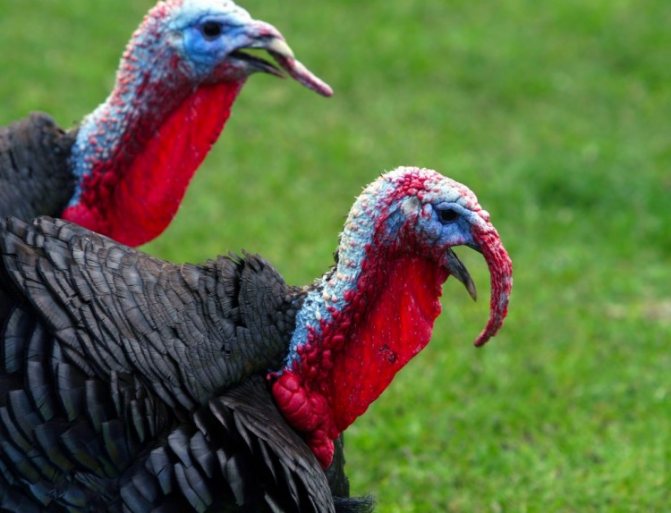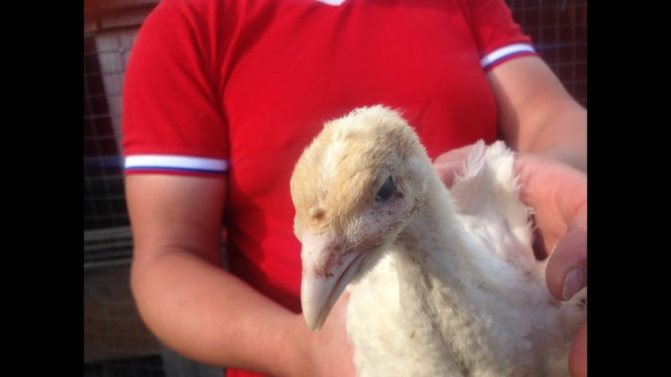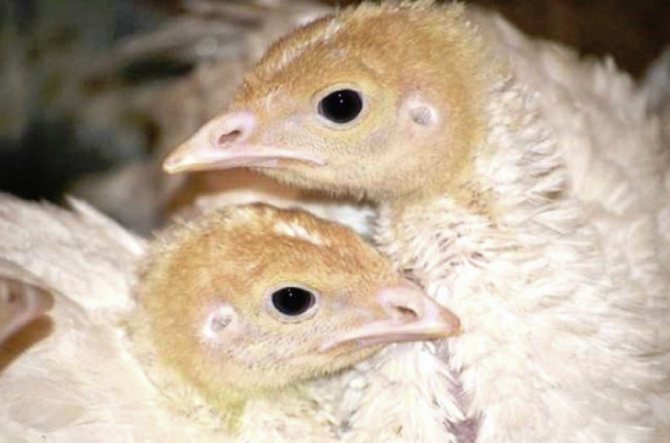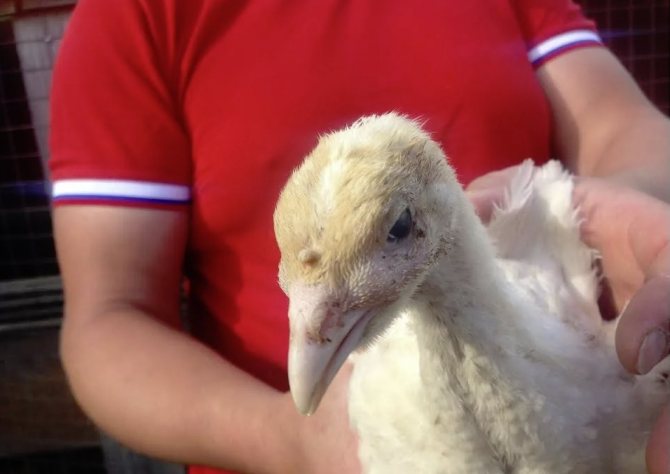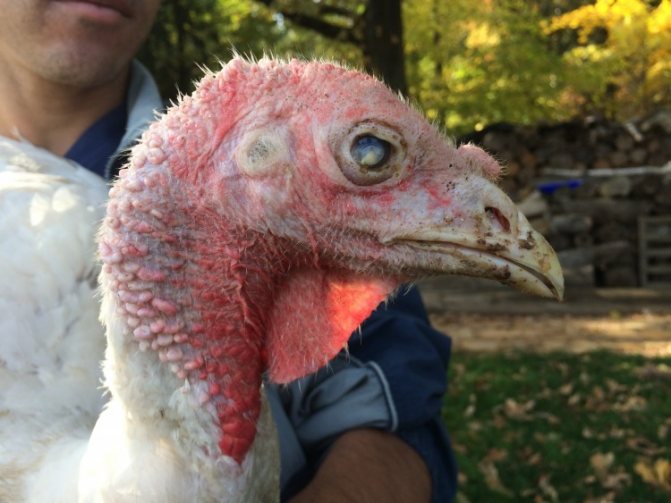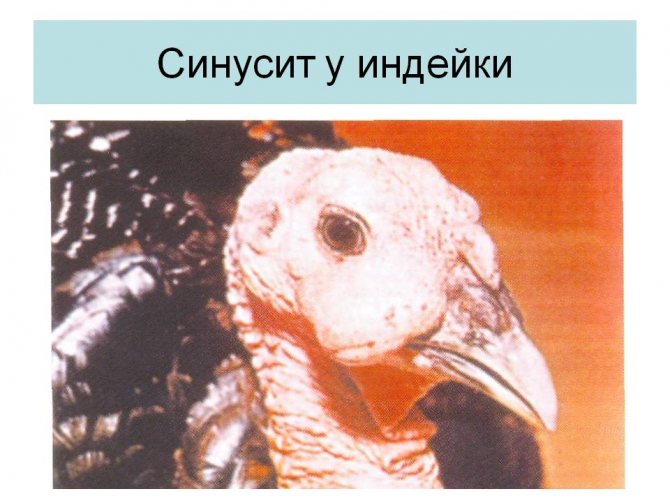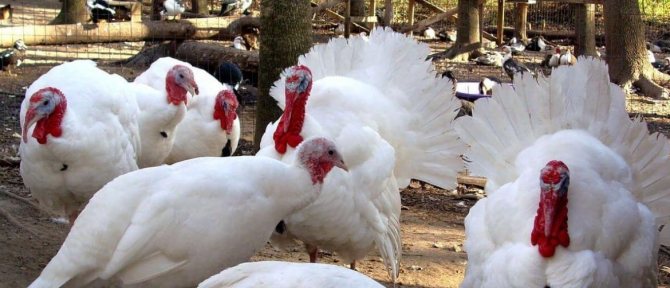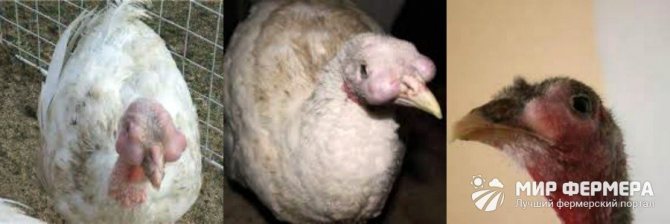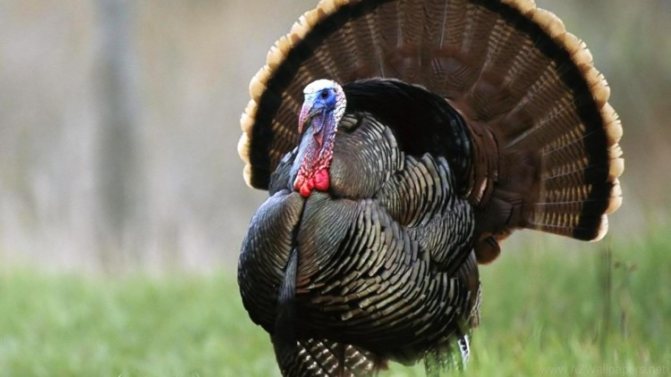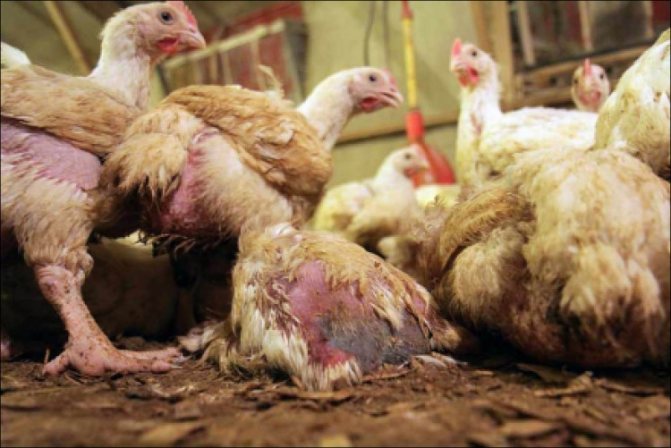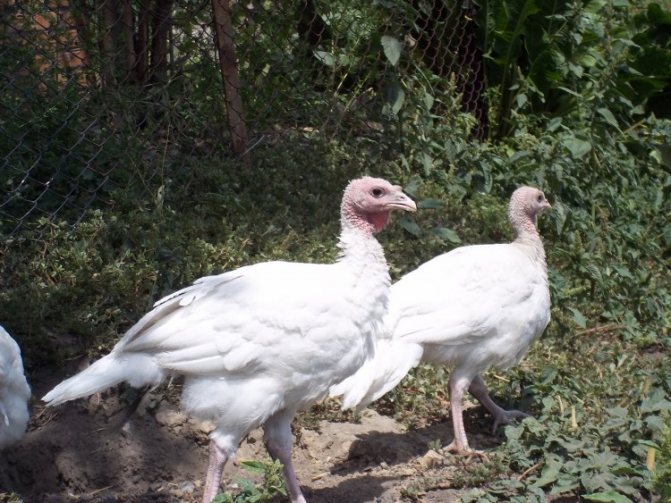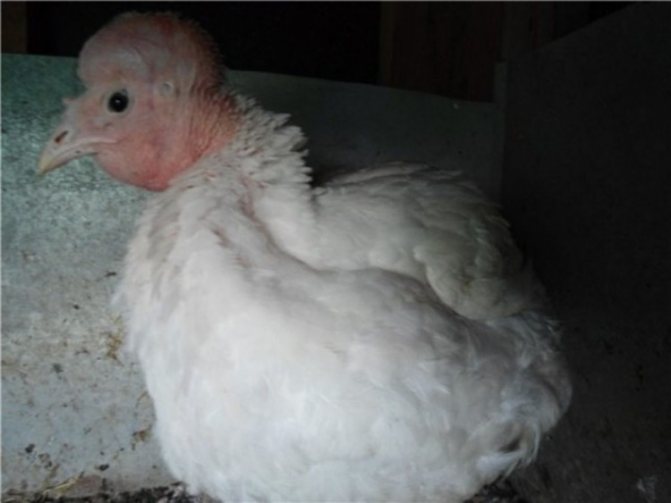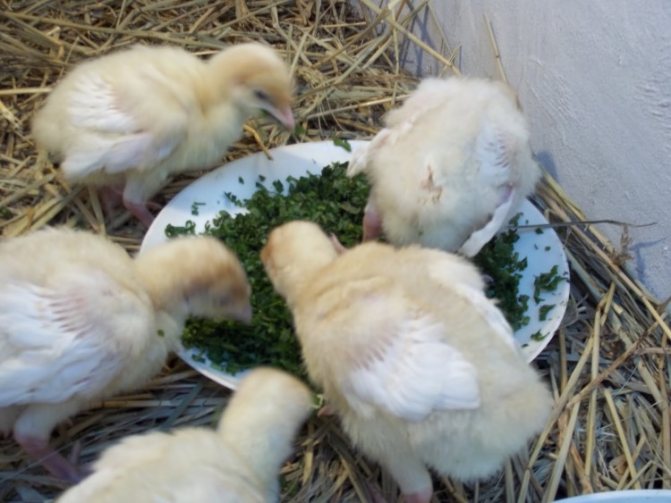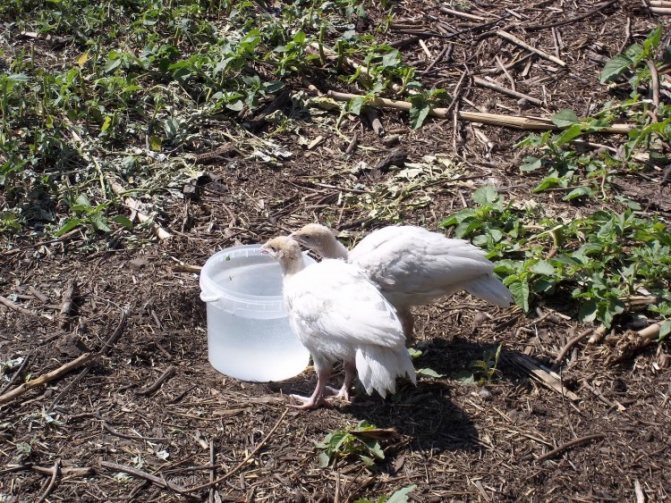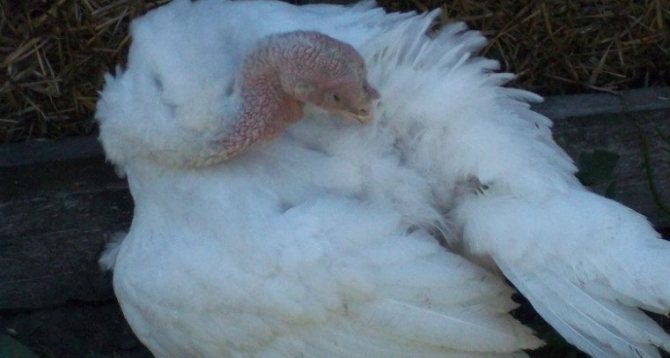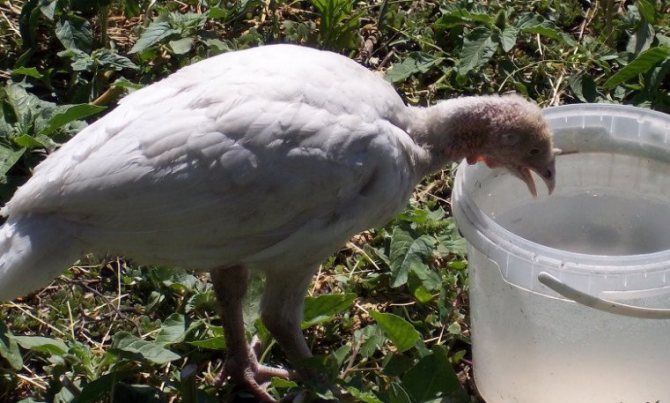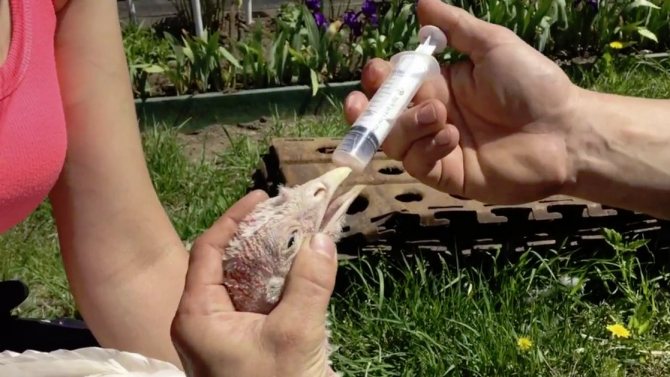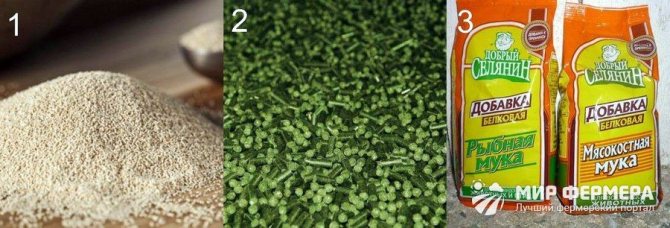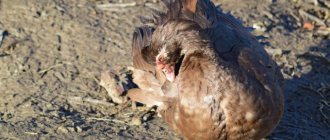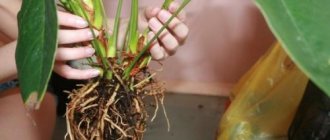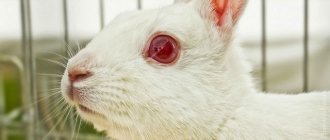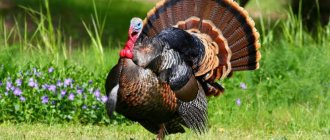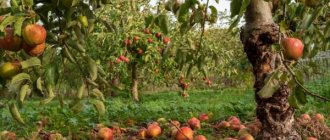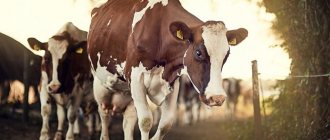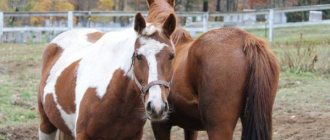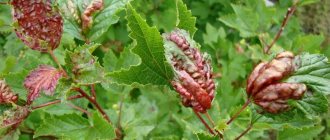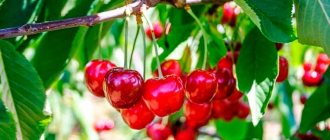
Respiratory mycoplasmosis or sinusitis is one of the most common diseases in poultry. The disease mainly affects young animals, and its symptoms are often invisible in the initial stage. In order for a farmer to diagnose sinusitis in turkeys in time and begin treatment, it is necessary to know the main signs of the disease. You should also study the preventive control measures and the causes of this ailment in order to exclude the possibility of the penetration of the pathogenic organism into the bird's body as much as possible.
What are the causes of this disease?
Considering a disease such as sinusitis in turkeys, it is worth paying attention to the fact that it is infectious in nature and is a serious respiratory type disease, expressed in both chronic and acute forms. This disease has its own pathogen, which constantly spreads and thereby affects the sinuses and respiratory tract in turkeys. Due to this effect, turkeys completely lose their appetite, they seriously lose weight, and become tired.
As for the modes of transmission, infectious sinusitis is transmitted in turkeys from infected individuals or through infected eggs. In addition, it should be understood that the infection of this disease can spread through liquid or through the air. Very often the presence of sinusitis in turkeys comes from contaminated personnel or equipment through which the animal is being looked after. If we consider the spread of this disease among turkeys, then there may be a tendency that this process occurs very quickly.
In the event that the symptoms of this disease were found in one bird, then each farmer must immediately inspect the entire livestock and take the necessary preventive measures. In this case, the infection may not appear immediately, since the incubation period is 1-3 weeks. If the care of the bird is correct, then infectious sinusitis will not manifest itself for a long time in this animal, and if detected early, the treatment will be quite fast.
Diarrhea in turkey poults: how to treat
Keeping young animals requires very close attention of the poultry farmer. This is especially true for young chicks who often suffer from diarrhea (Figure 2).
The first month of life is the most responsible, since during this period the chicks not only adapt to new living conditions, but also to the feeding regime. If turkey poults develop diarrhea, they will begin to refuse food and drink, become lethargic and sleepy. It is imperative to find out the cause of the diarrhea, since this condition is very dangerous for young animals.
The reasons
The main cause of diarrhea in turkey poults is improper maintenance in a contaminated poultry house or improperly selected feeding ration.
Unsatisfactory conditions of detention (dirt, air pollution, etc.) can also cause diarrhea, since pathogenic bacteria quickly develop in a dirty and humid room.
Symptoms
The onset of diarrhea is manifested by refusal to eat and lethargy. Liquid bowel movements appear over time. To determine the cause of diarrhea, look at the color of the droppings.


Figure 2. Signs of diarrhea in poults
If the stool is brown with a clear admixture of undigested food, you need to change the feeding diet. it is also worth paying more attention to the quality of the wet mash. It is possible that diarrhea was the result of eating sour feed.
Yellow and green droppings indicate a viral or infectious disease in an advanced form. In this case, you need to check the quality of the feed, exclude any suspicious products and carry out a course of antibiotic treatment.
White diarrhea is considered the most serious, as it is a clear sign of pullorosis that requires serious treatment.
What are the symptoms of this disease?
If we consider the treatment of such a disease, then first of all it is worth paying attention to the symptoms and its forms of course. Sinusitis in turkeys can manifest in the following forms:
In the presence of an acute form of a similar disease, the bird has symptoms of the disease, manifested in the form of:
- mucus is actively secreted from the nasal passage of turkeys;
- severe swelling of the larynx;
- excessively difficult nasal breathing;
- the presence of wheezing that can be heard when listening.
If sinusitis has been found in turkeys, then the development and growth of the chick is significantly slowed down. In addition, a similar disease in turkeys and adults significantly lowers immunity, which leads to the fact that birds become vulnerable to other respiratory and infectious diseases.
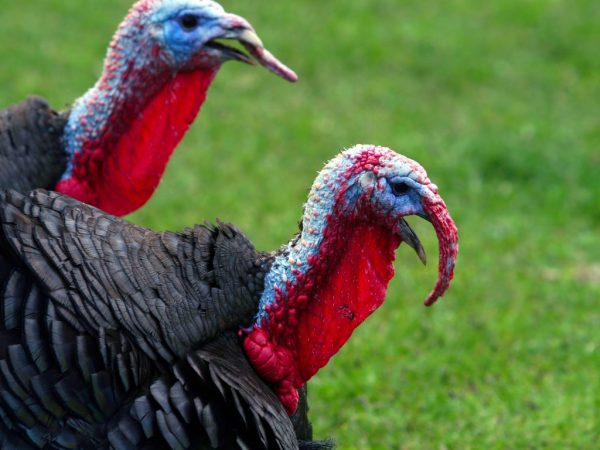

Treatment is always needed
When observing a chronic form, turkeys may experience symptoms such as a sharp weight loss, productivity will become almost zero, if this disease progresses altogether, then turkey poults will not gain weight at all.
If the bird is left untreated, then it will carry a small number of eggs or will stop laying them altogether. However, remember that such eggs cannot be used, as they are already infected. If a fairly young turkey fell ill, then in most cases it dies altogether.
Convulsions
In turkey poults, convulsions are often found as a sign of a certain disease. Health problems that are characterized by seizures are pullorosis, rickets, aspergillosis, diarrhea, and others. In general, seizures are most common in birds before death.
To get rid of such problems, first of all, you need to treat the disease that caused the seizures. Sometimes it is enough to normalize the nutrition of birds by adding microelement complexes to the food.
How to treat and diagnose sinusitis
If your chicks have sinusitis, you should know exactly how to treat it. In the event that you want to diagnose a similar ailment in turkeys and adults, then you need to monitor the general symptoms as closely as possible and conduct a special laboratory study. Due to the fact that it is quite difficult and long to identify the pathogen, for this you should contact a trusted laboratory, which will make a high-quality diagnosis and identify the causative agent of such an ailment.
At the same time, the process of treating turkeys for sinusitis implies the mandatory use of antibiotics, since it is completely impossible to get rid of the infection by other methods. It often happens that farmers do not provide a full-fledged treatment, but simply eliminate the initial symptoms. Because of this, their livestock simply suffers and a real epidemic arises. In addition, you should know that the process of treating turkey sinusitis with conventional folk remedies will not be effective at all. As for the choice of antibiotics that will get rid of turkey sinusitis, in most cases these include antibiotics of the so-called tetracycline group. Therefore, you can safely treat turkey poults:
Very often, treatment by farmers of turkey poults and adults is carried out with an injection form of tylosin and tartratam. How to treat sinusitis in turkey poults with similar drugs, for this there are detailed instructions for their use. Most often, in the first stages, only one injection is enough for the bird, after which a 30-day break should be made. If you notice that the treatment does not give the desired result, then it is advisable not to prolong this process and send the bird to slaughter. Most often, even after using such medicines, the ailment comes back. You can also try mixing the antibiotic into the water that the bird drinks. Also, pay attention to the fact that the meat is not contaminated with an antibiotic, about two days before the intended slaughter, it is necessary to stop giving it.
As a control, it is advisable to kill the cured bird immediately after healing. In the event that you notice an infection among adult birds that will be parents, then it is recommended to destroy all eggs in the incubator, and first cure the parents so that they cannot infect other birds and immediately send them to slaughter.
Read also Interesting directions for the new year
Noncommunicable turkey diseases: signs and treatment
The reason for the development may be non-observance of the rules for keeping turkey poults or a deficiency in the diet of a sufficient amount of vitamins and minerals.
To fix the problem, you need to adjust the conditions in accordance with the requirements.
Hard goiter


Hard goiter
Pathology develops with a high content of solid feed in the diet or as a result of long breaks in feeding.
The chick greedily grabs food and drinks it with water. Whole grains swell, clog the esophagus, and remain in the goiter without entering the stomach. The turkey feels hungry, so it continues to eat, which only complicates the situation. The goiter becomes hard and swollen. The blockage is surgically removed.
Hypovitaminosis
Pathology develops against the background of a lack of vitamins and minerals for full development.
Typical symptoms:
- watery eyes;
- lethargy;
- developmental lag;
- ruffled feathers;
- exudate in the sinuses.
To eliminate the problem, it is recommended to use premixes and special dietary supplements for turkeys.
They contain all the components in an accessible form. It is necessary to enrich the diet with herbs and boiled vegetables, and place containers filled with eggshells, chalk and fine gravel near the feeders.
Distorted appetite
A characteristic symptom is that the bird begins to peck at everything (chips, feathers, gravel). This indicates a lack of essential components in the diet.
If the disease is not treated, then over time the goiter hardens, the esophagus becomes clogged. To eliminate the deficit, the diet must be enriched with special vitamin complexes and mineral supplements.
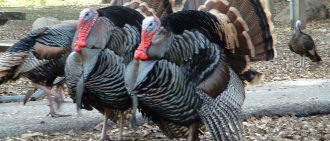

Be sure to read:
How to feed turkeys to gain weight quickly at home?
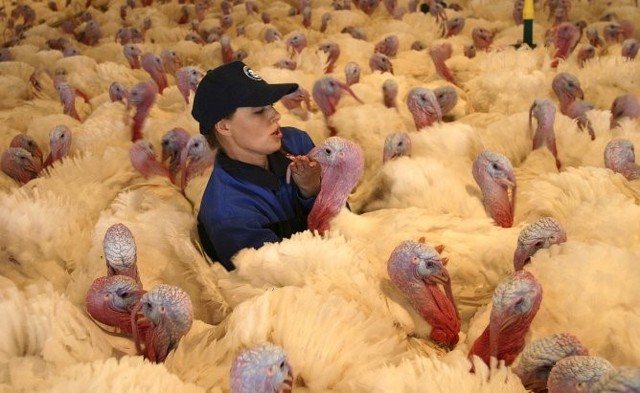

Respiratory mycoplasmosis is a type of contagious rhinitis. Its danger is that it spreads quickly and in a short time can affect the entire herd.
Antibiotics are also used to treat respiratory mycoplasmosis in turkeys, but no less attention should be paid to housing and feeding conditions.
The reasons
The disease occurs when turkeys are kept cold and damp. Under these conditions, the immunity of birds weakens and they become more susceptible to infections.
In addition, a lack of vitamins, in particular A and D, may be a provoking factor. To eliminate vitamin deficiency, it is necessary to regularly let the birds go for a walk and include juicy and green feed in their diet.
Symptoms
Infected birds can be easily identified by their characteristic symptoms.Their mucous eyes become inflamed, and it is easy to determine from their behavior that the turkey has become much worse seeing.
An additional symptom is mucous discharge from the nose, and in advanced stages, from the eyes. In young animals, this process may be accompanied by shortness of breath. Without proper treatment, birds quickly lose weight, weaken and may even die.
Turkey poults love warmth, a room with a low humidity level suits them. But just like cold, they do not tolerate heat and high humidity. It is in such unfavorable conditions that pets with low immunity can often develop mycoplasmosis.
This disease has the following symptoms:
- eyes swell, their mucous membranes turn red;
- it becomes noticeable that the birds are losing their sight;
- snot appears, eyes begin to water;
- pets lose weight.
The first step in the treatment of mycoplasmosis is to ensure the optimal temperature in the room. Treatment with antibacterial drugs Chlortetracycline, Oxytetracycline, Erythromycin, Levomycetin, Streptomycin is also prescribed.
Did you know? A turkey can blush with excitement.
Preventive measures
Every farmer considering how to treat sinusitis in turkeys should know that the bacterium that acts as a pathogen is quite unstable in the external environment. As for its survival outside the body, this process does not last long. But if the temperature is high enough or, on the contrary, very low, then in such situations it can persist for a long period. Even in the feces of this bird, the bacterium lives for three days.
Sinusitis in turkeys is perhaps the most common disease, very insidious and infectious in nature. If it is identified in a timely manner, you can save the livestock from death. Otherwise, the farmer will only have to calculate the losses. Economic losses from the deterioration of the egg clutch volume and the palatability of the carcasses, as well as from the cost of treatment, make this disease quite expensive and inhibit the development of poultry farming.
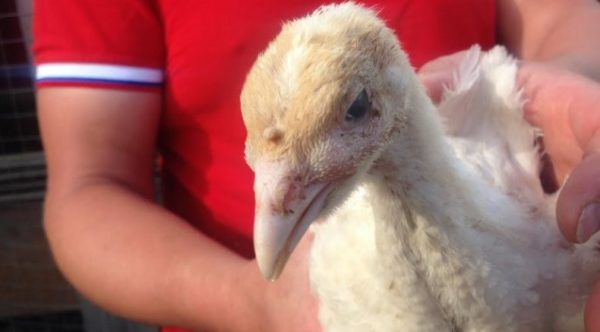

You can read about turkey breeds in our article - here.
Smallpox
Birds are highly susceptible to smallpox virus. This disease can affect all poultry, because its activity lasts up to six months.
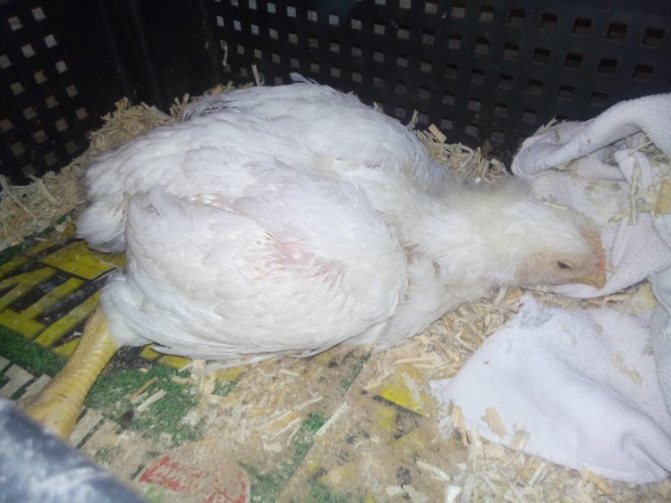

Rodents are the main vectors of the disease. How to determine the presence of the disease in turkeys? First, the birds develop growths on their heads - in the summer, and in the winter - on the mucous membranes.
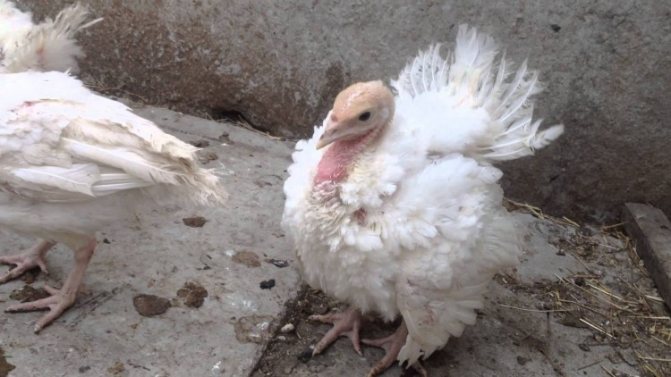

The most susceptible to the disease are birds with weak immunity. The duration of the disease can be up to one and a half months.


When sick turkeys are found, they are isolated from other individuals, vaccinated, and the place where the birds are kept is washed with lime.
Causes of sinusitis in turkeys
The second name for sinusitis is respiratory mycoplasmosis. This is a common disease in all poultry. Not only turkeys are ill with it, but also chickens, indows, pheasants, waterfowl, etc. Almost all age subgroups are ill with mycoplasmosis, however, young turkeys up to 12 weeks of age and young turkeys during the laying period are more susceptible. The disease leads to a decrease in the productivity of poultry, and deaths are not uncommon in young livestock. The disease was first identified and described in America in the forties of the twentieth century. Today, it is common in almost all countries of the world where poultry is bred.
The causative agent of the pathology is the unicellular Mycoplasma galisepticum. Mycoplasma is not strictly speaking a bacterium, but rather an intermediate form between bacteria and viruses. The pathogen is similar to cocci, does not have a cytological wall that separates it from the environment, and is bordered only by the cytoplasmic membrane. The size of mycoplasma is approximately 0.25-0.5 mm.Due to its extremely small size, it easily penetrates natural filters.
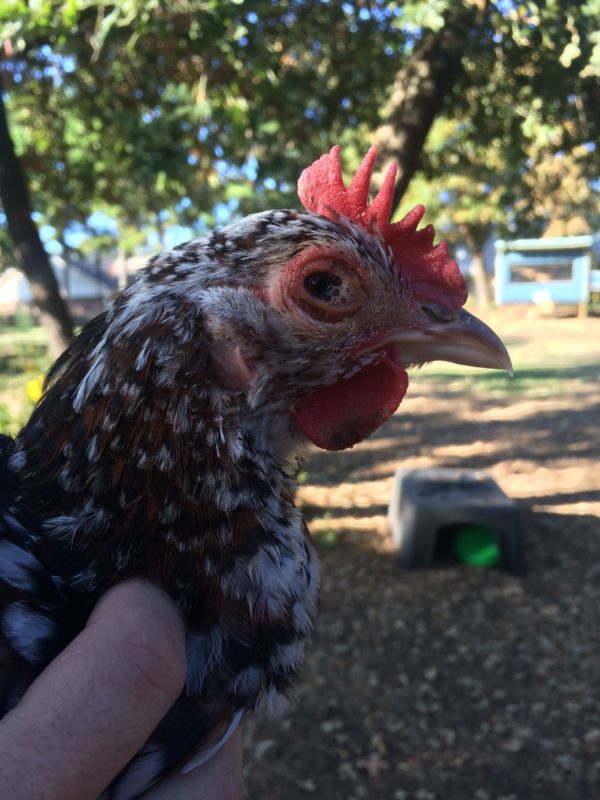

All poultry are susceptible to mycoplasmosis
At the initial stage of infection, mycoplasma enters the mucous membrane and is fixed on the epithelial cells. After that, the pathogen is embedded in the cell and begins to divide. From there, mycoplasmas enter the bloodstream and are carried through the internal organs, causing intoxication and the appearance of inflammation.
The source of infection is a sick bird or even eggs obtained from it. In the latter case, the turkeys born will be infected. Mycoplasma can enter other birds through dirty equipment, bedding, food, or air. Infection occurs in any way.
Poultry infection can reach 100%. The disease may not manifest itself with good immunity in a bird for several months and become more active under the influence of any stress factors: vitamin deficiency, during the period of feather change. The disease spreads rapidly among immunocompromised birds. Among the factors against which a more rapid infection of the bird occurs, one can note:
- unbalanced nutrition, causing a lack of the necessary vitamins and minerals in turkeys;
- poor conditions of detention, drafts;
- rare cleaning and disinfection of the premises.
Prevention of diseases of turkeys and turkeys from the 1st day
Eye diseases most often occur when birds are kept in a cold and damp environment. Because of this, such inflammatory processes are most often manifested in autumn and winter. These diseases are not fatal, but can cause a serious decrease in productivity.
Such pathologies can cause death only in young animals that are not yet strong enough.
The reasons
Inflammatory eye diseases are a direct result of poor living conditions.
The main reasons for the spread of these diseases include:
- A damp and humid draft environment weakens birds and makes them more susceptible to infections;
- Household contamination with droppings and high levels of harmful gases in the air can also cause inflammation;
- An improperly selected diet, in which there is insufficient fortified feed, can also cause illness.
To protect birds from eye diseases, special attention should be paid to the conditions of their keeping and feeding.
Symptoms
At the initial stage, eye diseases are accompanied by swelling of the mucous membranes. Gradually, the eyes begin to fester, and the bird's vision deteriorates. As a result, she cannot find food and water, and gradually weakens.
Very often, eye diseases are accompanied by a runny nose, in which mucous discharge appears from the nose. For treatment, you need to disinfect the house, insulate the room and change the diet. In advanced cases, the use of antibiotics is necessary.
In order to prevent turkey infections from infectious diseases, young animals should be purchased only from proven farms, as well as regularly wash, clean and disinfect premises, equipment and inventory (complete disinfection is carried out after each change of livestock).
You can determine the presence of infectious diseases by litter (Figure 7):
- If the turkeys are healthy, the stool will be dark, with slight light streaks of urine;
- Yellow or brown feces indicate an excess of carbohydrates in the diet;
- Dark stools with mucus or blood is evidence of excess animal protein;
- Green and liquid droppings indicate that the birds have started diarrhea, and at the same time the feathers around the cloaca are becoming contaminated.
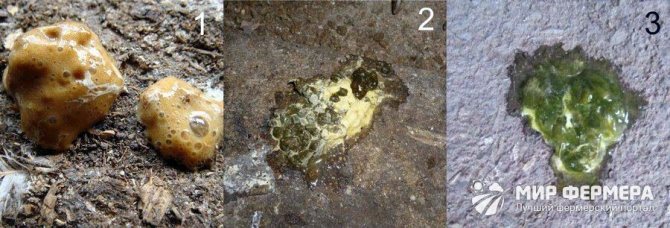

Figure 7. Determination of the type of disease by litter: 1 - an excess of carbohydrates, 2 - an excess of animal protein, 3 - severe food poisoning
To prevent infection of the entire livestock, you need to regularly change the litter and use various disinfectant solutions and products for processing tools and equipment.The most effective means for disinfecting poultry houses and equipment are shown in Figure 8.
- You can simply take out the entire inventory in the sun, since under the influence of light, many pathogens, including helminth larvae, die;
- You can also handle the inventory with ordinary boiling water;
- An effective means for disinfecting premises is a solution of slaked lime, which is used to whitewash the walls and ceiling;
- For the prevention of digestive diseases, birds can periodically be given a weak solution of potassium permanganate;
- Formalin is used as a disinfectant for the treatment of incubators (by evaporation);
- Creolin is a good disinfectant;
- In order to prevent the birds from being hit by feather lice, it is necessary to arrange boxes with ash and sand so that the turkeys can take ash baths. It is important that the contents of the box are always dry.
We invite you to read: Tetra von rio description breeding compatibility photo video content


Figure 8. The main drugs for the treatment and prevention of diseases in turkeys and turkey poults
Feeding turkey poults is carried out according to several schemes (table 1). Their choice depends on the age of the birds and their breed. For example, with a crowded content or when growing a heavy Big-6 cross, much more antibiotics will be needed than when breeding other breeds.
One of the most popular schemes for drinking turkey poults involves the use of several drugs:
- From 1 to 5, on days 33-34, 58-59 and 140-141, antibiotics are given in the morning and in the evening, adding to drinking water (Baytril, Tilan preparations);
- From 21 to 30, 45-54, 65-74 days, a metronidazole tablet is diluted in a liter of water and dispensed once a day.
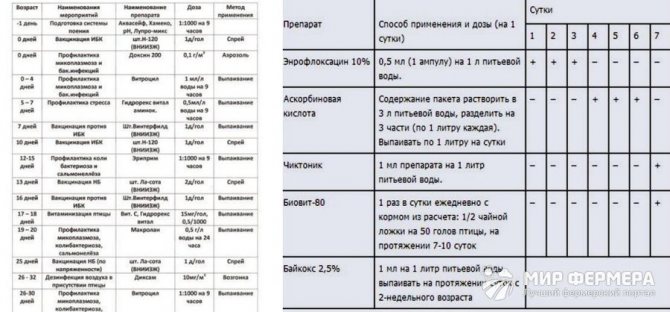

Table 1. Variants of schemes for prophylactic drinking of turkeys against diseases
In between, they give out vitamins by adding them to water or wet mash. This scheme allows you to prevent the spread of diseases and increase the resistance of the immune system.
For more information on disease prevention in turkey poults, see the video.
The emergence of infectious diseases occurs due to certain viruses and microbes. If the disease is not captured at the very beginning, then a full-fledged epidemic can develop from a single case.
In another way, the disease can be called avian rhinitis, which is transmitted by airborne droplets. Most often, farmers face such a problem in spring or autumn, when the bird suffers from hypothermia or poor-quality feed appears. The disease occurs against the background of a lack of vitamins of groups B and A, and as a result of problems with the immune system.
Symptoms
Among the main symptoms, the following are observed:
- the cornea of the eye becomes inflamed, vision decreases noticeably;
- limbs give way;
- the bird often falls;
- breathing problems (typical of young animals);
- the presence of discharge from the nostrils and eyes.
Turkeys begin to lose weight dramatically, if treatment is not started on time, then death begins.
Treatment methods
If the young begin to fall on their paws, then trying to fight the disease is already useless. The appearance of such symptoms suggests that the disease has turned into a severe form, the only way out here is to destroy the young bird.
With limb problems in adults, there is still a chance for a successful outcome when using drugs. The most commonly used are chlortetracycline and oxytetracycline, they are given with feed for at least 7 days. The vaccine processes grain feed at the rate of 0.4 kg / 1 ton. Experts recommend giving turkeys one of the following antibiotics:
- erythromycin;
- chloramphenicol;
- streptomycin.
Tuberculosis
Occurs due to tubercle bacillus. The most common cause of infection is called: indoor pollution, poor-quality water, inventory that was used when caring for other birds.It can be attributed to diseases that pose a great danger due to the fact that the lungs, bronchi, and other internal organs are quickly affected.
Symptoms
Symptoms include the following:
- the bird completely refuses to feed;
- limbs weaken;
- the presence of apathy;
- the manifestation of characteristic skin formations.
Treatment methods
The sick population cannot be treated. In order to prevent a possible epidemic, the entire sick herd is destroyed, and the premises are completely disinfected.
There are no drugs to eliminate tubercle bacillus. The most effective way is the presence of sunlight. The infected room is left as open as possible for a period of at least 60 days. Under the pressure of clean air and the scattered rays of the sun in the room, the black stick will gradually disappear.
Histominosis
Most often it manifests itself in white broad-breasted turkeys with the wrong content. Especially if the room has not been properly processed after other poultry that have lived there. The disease is dangerous because it affects the liver and cecum.
Symptoms
The main manifestation is the presence of diarrhea with a foamy consistency and green color. The bird abruptly drops mass, does not eat food, feathers in the tail area are dirty, the rest of the cover is disheveled.
Treatment
Success depends on how quickly liver and bowel problems are noticed. Sick livestock are separated, and the poultry house is disinfected. For treatment, osarzol and furazolidone are used, which are added to the feed. As an additional tool, deworming of the entire livestock is carried out.
Pullorosis
Young animals fall ill at the age of 14 days.
Symptoms
Symptoms appear as follows:
- constant desire to drink;
- refusal of feed;
- chicks often squeak;
- general weakness;
- the presence of yellow diarrhea.
Treatment methods
The use of antibiotics is only justified if a decision is made about treatment. Most often, poultry farmers destroy young animals, because the cost of medicines is not justified, and the mortality rate is too high.
Infection occurs through feed and drinking water from an already infected bird. Among the peddlers, the most dangerous are blood-sucking insects.
Symptoms
First of all, sick turkeys become lethargic and lethargic, their wings sag. The bird tries to find a secluded, shaded corner. If you do not take care of the livestock in time, then yellow spots appear on all open areas of the body and mucous membranes.
Treatment
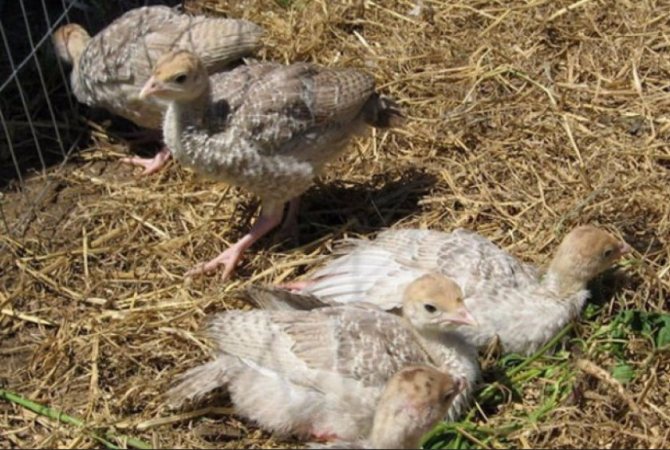

The disease is incurable. Sick birds are isolated and burned after death, the rest of the livestock is vaccinated. The best preventive way to vaccinate turkey poults at the age of 6 weeks.
Types of sinusitis
Table # 1. Varieties of sinusitis in turkeys
| Type of disease | Normal age for illness | Symptoms |
| infectious sinusitis | 3-6 months | change in the shape of the head, conjunctivitis, discharge from the nostrils of exudate |
| aerosacculitis | young turkeys | does not appear outwardly, upon opening, the affected chest air sacs are found |
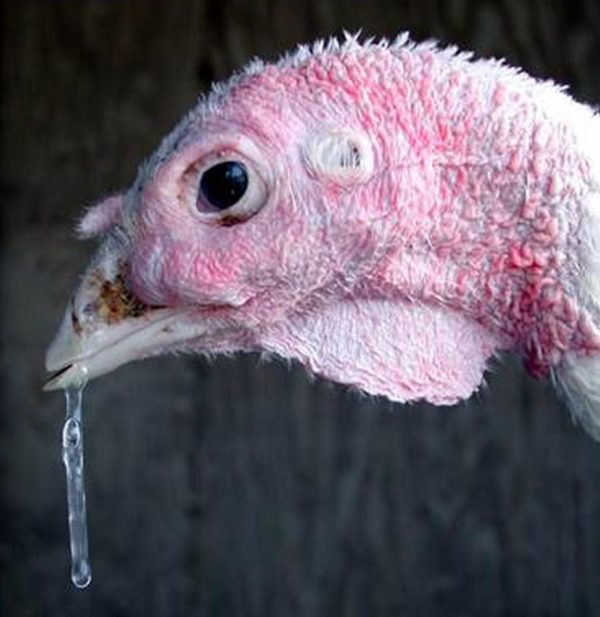

Mycoplasma gallisepticum infection
Stages of sinusitis
- Latent lasts 12-21 days before the formation of antibodies.
- The second lasts 1-21 days: the infection affects 5-10% of turkeys.
- The third lasts 7-32 days: antibodies are formed in 95% of birds.
- Terminal lasts up to 20 days.
After infection with mycoplasma, the incubation period is from 2 days to 2 weeks. Under natural conditions, it is quite difficult to determine the onset of an infection stage, but studies have shown that usually the disease develops in 6-10 days. The length of the incubation period depends on the immunity of the bird's body.Often, clinical signs begin to develop early in egg production if the infection has been transmitted through eggs, accelerated by stressful events for the bird.
At the initial stage of the disease in a turkey, it is noted:
- deterioration in appetite up to refusal to feed and, as a result, exhaustion;
- weakness, lethargy, lethargy;
- the flow of mucus from the nose, which, drying out, becomes a crust;
- mucus clogs the nasal passages, it becomes difficult for the bird to breathe, it rubs its head and beak on the ground;
- conjunctivitis and signs of sinusitis: the infraorbital sinuses become inflamed, the tissues swell a little, because of which the bird can close its eyes;
- the appearance of bumps over the eyes;
- when breathing - strong wheezing;
- swelling of the intermaxillary space;
- productivity decreases.


The appearance of bumps under the eyes is one of the symptoms of sinusitis.
Initially mild respiratory signs progress 2-7 days until a distinct cough appears in 90% of the heads of the flock. Swelling of the groove with discharge from the nasal passages is observed in 1-70% of heads. The problem can go on for months. According to the speed of the course, the disease is divided into chronic and acute.
Some individuals may develop diarrhea, leading to wasting. With the aggravation of the disease and the absence of treatment, the following are observed:
- cough and shortness of breath;
- hard breath;
- arthritis symptoms: the bird has difficulty walking;
- wobbly gait with loss of coordination;
- when a lethal outcome is approaching, there is no reaction to stimuli.


Young turkey poults up to 4 weeks are most affected. The lethality of an adult bird can reach 20%, and a decrease in egg production - 40%. The disease can be complicated by the addition of secondary infections. The body of a sick bird is weakened, in addition, the mucous membrane of the respiratory tract damaged by mycoplasmas becomes an open gateway for the penetration of other pathogens. When the disease is complicated by other pathogenic microorganisms, the mortality rate increases.
In birds, in which symptom complexes of pathology have disappeared, immunity is observed, although microorganisms from them can be transmitted to offspring through an egg or to other individuals upon contact.
Sinusitis diagnostics
An autopsy is necessary to accurately diagnose. The pathogen is found in all tissues. But it is better to take scrapings from the mucous membrane of the trachea or the air sacs of a dead bird for examination under a microscope. At autopsy, inflammation of the mucous membranes of the larynx, nasal cavity, accumulation of exudate in these organs are visualized; when examining the bronchi, fibrous plugs are visible. Sacks with sinusitis are more turbid, with whitish films covered on the inside. Sometimes a viscous cloudy liquid is found in them.
Read also How many days does a cow bear a calf
In living individuals, the diagnosis can be made on the basis of the clinical picture of the disease. Respiratory diseases with a similar symptom complex can be a manifestation of chlamydia, cryptosporidiosis, and vitamin deficiency. To differentiate the pathology, cultural and serological studies are carried out.
Video - Sinusitis in turkeys
Description of the disease
Infectious sinusitis is caused by a microorganism that is intermediate between a bacterium and a virus. Infection occurs after mycoplasma enters the mucous membranes of the respiratory tract, where the pathogenic organism multiplies, and then enters the blood of the bird. The disease can become chronic. Practice shows that turkey poults are more likely to suffer from sinusitis from two weeks of age until they reach four months.
Advice! Under favorable conditions for a turkey, its immune system is able to suppress the infection.
The disease usually progresses in the autumn or winter period of time, since with the onset of dampness and cold weather, immunity decreases, much less vitamin substances enter the bird's body, and it becomes susceptible to sinusitis and other infectious diseases.The development of the disease can occur up to ten days without obvious signs. The farmer needs to know the main symptoms and treatment of this ailment so as not to lose the entire livestock, and, consequently, the profit.
Diseases of the musculoskeletal system
Turkey poults are highly susceptible to diseases of the musculoskeletal system. These health problems primarily include rickets and arthrosis.
Chicks of heavy crosses mainly suffer from rickets, which need a lot of protein food and calcium to increase their growth rates.
Representatives of egg breeds also often have manifestations of rickets:
- lethargy;
- inactivity;
- decreased appetite;
- impaired coordination of movements;
- unhealthy plumage appearance.
Replenishing the diet of pets with calcium will not lead to their desired recovery without vitamin D3 entering the body, as well as control over the presence of phosphorus in the body, the excess of which contributes to the leaching of calcium from the bones and the appearance of osteoporosis.
Therefore, enriching bird food with vitamins does not completely solve the problem.
Important! The normalization of the condition of the birds, first of all, can be helped by their constant movement and walking in the fresh air, because turkeys often live in cramped conditions. It is only necessary to ensure that there is a place where they will be able to shelter from the sun if necessary.
Arthrosis
Often, turkey poults are not affected by an infectious disease, and therefore not transmitted from one chick to another, the disease is arthrosis. This is an inflammation of the joints, which causes dystrophic and degenerative processes and leads to their deformation.
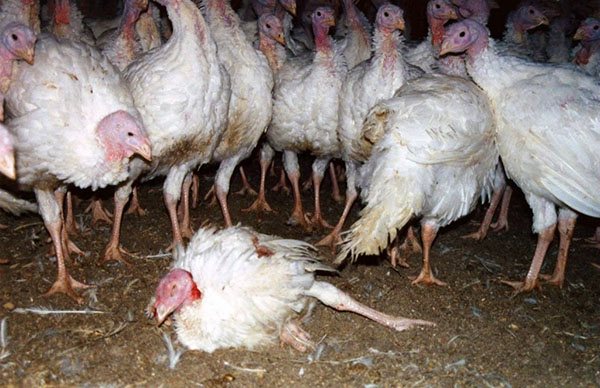

The cause of its appearance is changes in the knee and pelvic cartilage and joints, resulting from:
- significant physical activity;
- taking protein foods;
- metabolic disorders;
- exposure to infections.
The symptoms of the disease are:
- strong painful sensations in the joints and their immobility;
- altered joint shape;
- curved limbs;
- poor appetite, constipation;
- unsteadiness on the legs.
It is recommended to start treating the disease as early as possible, because the problem can lead to damage to all joints and the death of pets. It should also be borne in mind that the treatment process will not bring results if the root cause is not eliminated.
Constant walking in the fresh air, proper nutrition, treatment with drugs that restore the proper functioning of the joints will help eliminate all the symptoms of the disease.
Did you know? Originally, in the European part of the globe, value was given to the feathers of turkeys, not their meat.
Reasons for infection
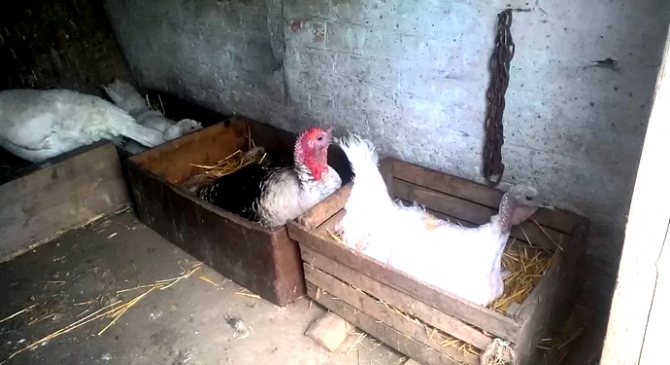

Sinusitis is a contagious disease that is transmitted from one sick individual to another and often ends in a real epidemic. The beginning of its development is mainly the violation of the rules for keeping turkeys.
The main causes of sinusitis are:
- drafts and dampness in the room where birds live;
- frequent stress;
- lack of vitamins A and D;
- non-observance of hygienic standards for caring for turkeys;
- contact with an infected animal or instrument.
Sinusitis is transmitted mainly by airborne droplets, and therefore spreads rapidly, affecting the entire livestock. The incubation period can last from one to three weeks. With proper care, the turkey appears healthy for a long time, although the disease-causing organism is already multiplying inside its body. At the first signs of the appearance of the disease in at least one bird, the farmer should inspect all other individuals in order to start timely treatment and take all the necessary measures, thereby preventing the disease from spreading further.
Conjunctivitis in turkey poults: treatment
Poults often suffer from conjunctivitis, an inflammation of the eyes (Figure 3).If the disease was detected on time, it will not cause serious consequences, but in its advanced form it can provoke major complications, which may even end in the death of the chick. This is due to the fact that the body of the turkey poults is not yet strong enough, and will not be able to recover well after the inflammatory process.
The reasons
The main reason for the development of conjunctivitis is the unsatisfactory maintenance of young animals. The room where the chicks are located should always be clean. Dust, droppings and high concentrations of gases in the air cause corneal inflammation.
In addition, sufficient attention should be paid to disinfecting the house and equipment. This condition is especially important if serious ailments have already been observed on the farm. For the purpose of prevention, disinfecting treatment is carried out every 2-3 months and extraordinary when buying birds from other farms.
Symptoms


The main symptom of conjunctivitis is profuse lacrimation and suppuration of the eyes. In advanced stages, the eyes become covered with a thick layer of purulent secretions, and the bird can no longer open them.


Figure 3. Symptoms of conjunctivitis in turkeys
In some cases, discharge can also come from the nose. This indicates that the bird's immunity is weakened, and she developed a cold, which caused inflammation. To eliminate the disease, it is necessary to revise the conditions of detention, move the cage to a warmer room, improve the feeding diet and regularly wash the eyes. If necessary, antibiotic treatment is given.
We suggest that you familiarize yourself with: Cat abscess symptoms and treatment of purulent wounds
The main symptoms
Since sinusitis can occur in acute and chronic forms, its manifestation, depending on the type of disease, is also different.
In the acute course of this disease in turkeys, the following is observed:
- discharge of mucus from the nasal cavity;
- frequent yawning;
- cough and wheezing;
- swelling of the larynx, as a result of which it becomes difficult to breathe;
- sticking eyes, due to purulent discharge;
- an increase in head volume due to tissue swelling.
In turkey poults, general development stops, and growth slows down. Sinusitis reduces the protective functions of the immune system, and the bird, along with this disease, can become infected with other ailments.


The main symptoms of the chronic form of the disease:
- decrease in overall productivity;
- the small size of the turkey, which does not increase with age;
- low survival rate of young animals;
- frequent infertility of eggs.
Both forms of turkey sinusitis negatively affect birds and make breeding difficult. But such a disease can be cured if you know all the symptoms and take action in time.
Perosis
Due to the lack of manganese in the body of turkey poults, they may develop perosis. In this disease, the ligaments and tendons are relaxed, the joints are displaced, which is also called the "sliding joint" or "sliding tendon". In addition, the body disrupts the processes of synthesis of fatty acids, proteins, as well as oxidation and reduction.
In birds, the following signs of the disease are observed:
- the joints are deformed, their swelling, compaction, curvature is observed;
- birds lose weight, stunting occurs, they develop poorly;
- there is a constant depletion of the body, which can lead to death.
To combat the disease, you need to add manganese sulfate to food, and potassium permanganate to water. In addition, pets should be provided with choline, riboflavin, biotin, nicotinic, pantothenic and folic acids as part of the vitamin and mineral complex.
In summer, for the purpose of prevention, birds should be provided with clover, alfalfa and other greens.
Did you know? Benjamin Franklin made turkey very popular in the United States: he adored the meat of this bird so much that he had a desire to make it the national symbol of the country.
Measures to get rid of the disease
Sinusitis symptoms are similar to those of other diseases in turkeys.Therefore, in order to correctly prescribe the treatment of sick birds, an accurate diagnosis should be made by laboratory tests. Infected individuals take swabs from the mucous membranes and send them for analysis.
Treatment of turkeys should be carried out with tetracycline-based antibiotics, of which there is now a fairly large selection. The agent is injected into the sinuses under the eye openings, having previously cleared the passages from mucus and pus. This procedure requires special skills, so it is better to entrust it to a veterinarian. Treatment of sinusitis with folk remedies is useless, since the disease is diagnosed for a long time and removed from the body. Farmers trying to get rid of the disease on their own only exacerbate the condition of the turkeys and suffer further large losses from death.
It is allowed to water the birds with Tylosin-200 solution for five days, mixing it with water. After the disappearance of all symptoms, the turkey fillet can be consumed only after a month. Treatment with Farmazin-500 powder helps from a cold in young animals, diluting one gram of the substance in a liter of water. They solder it to turkeys for ten days, giving it twice a day. You can also instill two milliliters of solution three times a day. In this case, a syringe is used, injecting the medicine into each nasal opening.
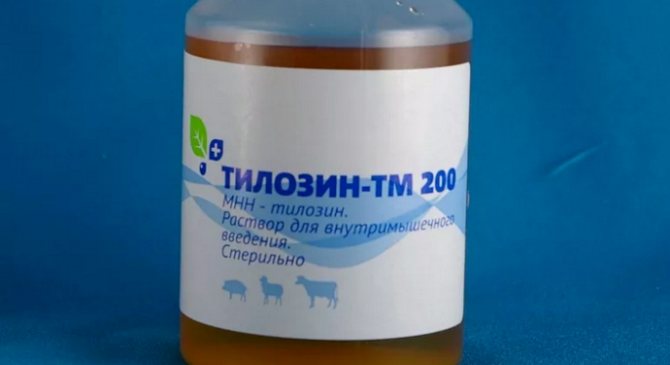

Advice! Treatment must be completed, otherwise the symptoms of the disease may return again.
Prophylaxis
Sinusitis in turkeys, the treatment of which is a rather time-consuming procedure, can be prevented by observing the rules of bird care. The room where small turkeys are kept should be warmed up to 34 degrees Celsius. As they grow older, it can be gradually reduced to 18 degrees. The house should be equipped so that fresh air can get in, but there is no draft.
It is necessary to comply with the territorial requirements of turkeys so that they move freely and do not interfere with each other. It is recommended to exclude the joint keeping of turkeys and other bird species. It is important to monitor the condition of the litter, which must be dry and loose. It should be changed frequently. Fresh water, quality feed and cleanliness of drinkers and feeders are also key to the health of turkeys. For prevention, young animals can be fed with special antibiotics, which reduce the risk of contracting sinusitis.
Turkeys are quite often exposed to various diseases, but many of them are treated if the symptoms are identified in time and appropriate measures are taken. Therefore, the farmer should observe the birds and when their external condition or behavior changes, it is better to seek qualified help. But so that turkeys do not get sick, it is necessary to follow all the rules for their maintenance, taking into account the genetic characteristics of the species, because treating sinusitis or other ailment is much more difficult than taking proper care of the birds.
>
Non-infectious
Hard goiter
Photo:
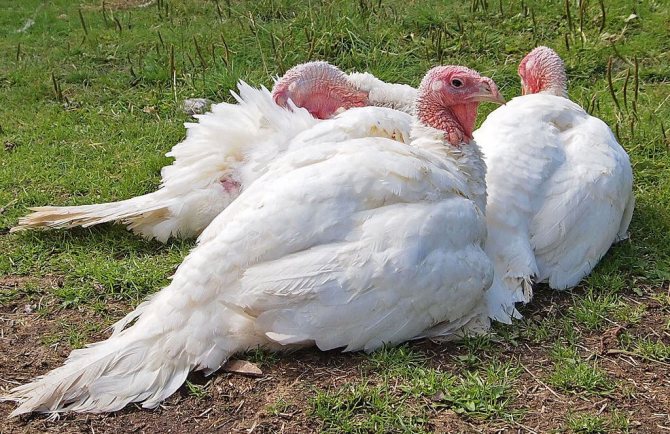

This usually happens if the bird has been starving for a long time and, after the hunger strike, ate food too greedily. After feeding, the turkeys go to drink. Whole grain accumulated in the goiter swells from water, swells the goiter and clogs the esophagus.
Lack of stones or shells for grinding grain can only affect the stomach. In this case, the root cause of hard goiter is intestinal blockage at the exit from the stomach.
When feeding turkeys with factory compound feed, this does not happen, since when water gets on the compound feed, the latter immediately soaks into a gruel, for the assimilation of which even pebbles are not needed. With a sufficient amount of water drunk by a turkey, the gruel turns out to be liquid.
In theory, the goiter of a turkey can be surgically opened and the swollen grain removed. But this procedure must be carried out by a veterinarian, and therefore it is usually more profitable to slaughter turkeys than to treat them.
Symptoms
Apathy. The goiter on palpation is hard, tightly packed. Turkeys refuse to feed.
Depletion and decreased egg production in turkeys is observed if the disease develops during the laying season. Due to the pressure of the goiter on the trachea, breathing of turkeys is difficult, subsequently death from suffocation occurs.
Treatment
When clogged, the goiters of the turkeys are opened and their contents are surgically removed. After that, vaseline oil is injected into the goiter of the bird, sunflower oil can be used. After massaging the goiter, the contents of the goiter are removed, in fact, squeezed out through the esophagus.
Important! To prevent the disease with hard goiter, turkeys should be fed regularly, avoiding long breaks; it is better not to use whole, easily swelling grain in the diet of turkeys.
Sagging goiter
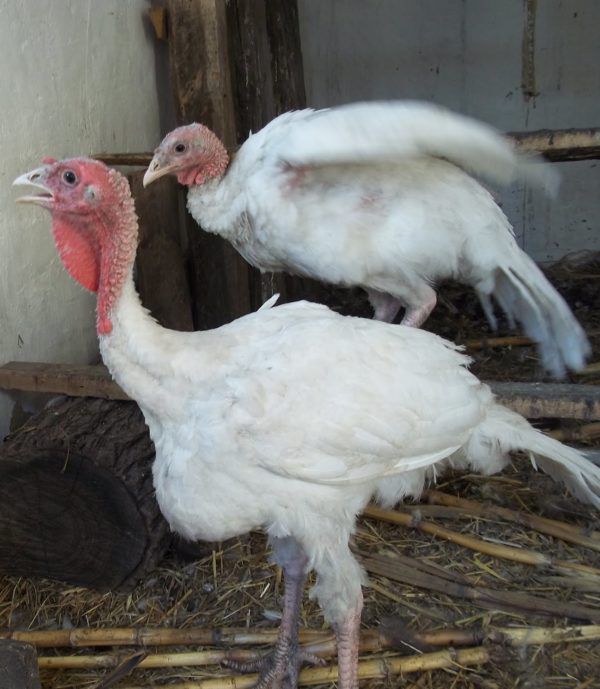

One of the varieties of hardened goiter. It proceeds in a milder form, and therefore is treatable.
It occurs due to imbalance in nutrition, excessive water consumption, prolonged stay in too hot and stuffy rooms, as well as in the summer in the sun. As a result, the goiter in the animal stretches and sags.
As a treatment, a special diet is prescribed - it is prescribed by a veterinarian on an individual basis (the components of the diet are directly dependent on the diet of the bird).
In addition, victims need complete rest - as little movement and contact with other members of the pack as possible.
Pica
Another striking example of the lack of nutrients in the ration. To replenish the necessary supplies, the turkey begins to eat things unusual for him - stones, feathers, sawdust, litter of nests.
Treatment involves a simple revision of the diet of the bird, its saturation with all the necessary trace elements and vitamins.
Paw problems
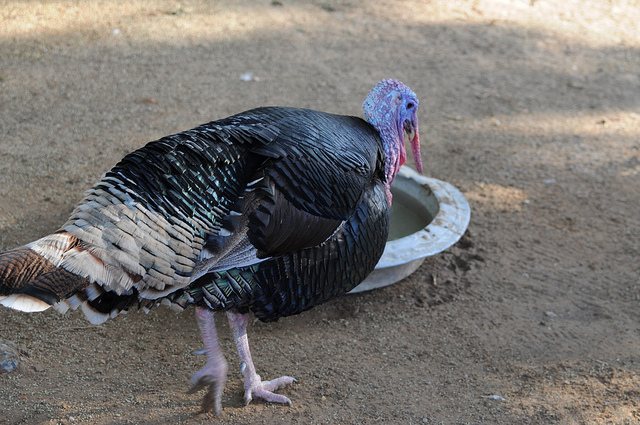

Bone development problems, lack of calcium can be the reason that birds are very unstable and have weak leg muscles.
If the chicks do not have enough room to walk, this can also be the reason for the fall. In addition, the problem with the paws can arise due to their eversion.
If the turkey is unstable, but at the same time actively eats and looks cheerful, then the problem lies in nutrition. If the bird looks sleepy, lethargic, hides in a secluded place, then this is a sign of an infectious infection.
Inverted leg joints are a sign of arthritis. In this case, edema is observed around the joint. For the treatment of arthritis, an aqueous solution of mumiyo is used at the rate of 0.4 mg per 100 g of bird weight.
The solution is given instead of drinking for 10 days. A 5-minute rubbing of an 8% solution of mumiyo into the inflamed joint is also used.
Vitamins B and D are additionally introduced into the diet of the bird. Oilcake is removed from the diet in order to reduce the fat content of the feed. Treatment of infectious diseases is prescribed depending on the diagnosis made by the veterinarian.






